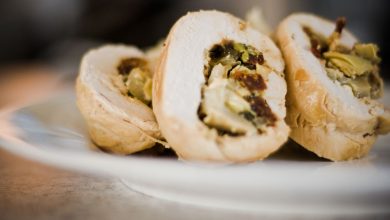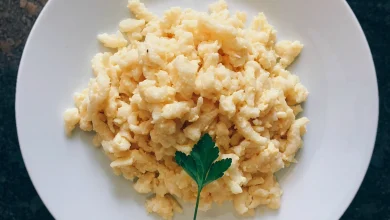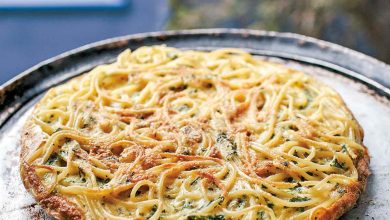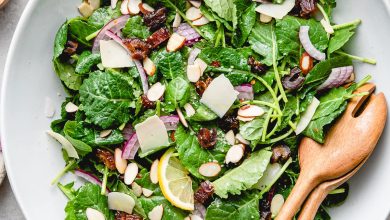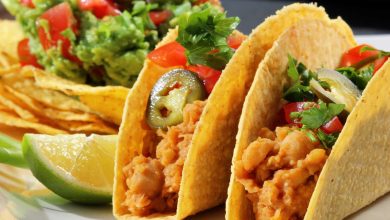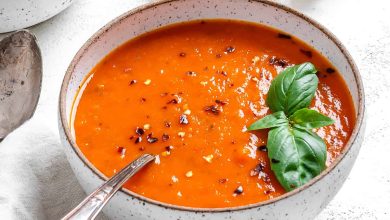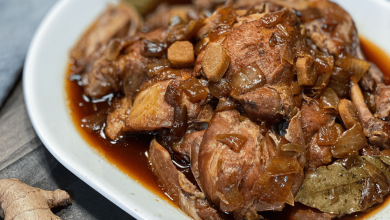Asian Spring Rolls
🥟 Asian Spring Rolls 🥟
Asian Spring Rolls are a delectable and colorful dish often served as an appetizer or a light, refreshing snack. These rolls are not just a feast for your taste buds but also a treat for your eyes with their vibrant and fresh ingredients. Let’s dive into the history, components, steps to prepare, and the time needed to make these delicious treats! 😋
📜 History:
Spring rolls have a rich history dating back to ancient China. They were initially made to celebrate the arrival of spring and were considered a symbol of good luck and prosperity. Over time, they spread across Asia and took on regional variations in terms of ingredients and preparation methods. Vietnamese and Thai spring rolls are well-known worldwide. In Vietnam, they are called “Gỏi cuốn,” while Thai spring rolls are known as “Por Pia Tod.”
🥢 Components:
Traditional Asian spring rolls typically consist of the following components:
-
Rice Paper Wrappers: These thin, translucent sheets made from rice flour are used to encase the filling.
-
Proteins: You can use cooked shrimp, sliced grilled chicken, or tofu for a vegetarian option.
-
Fresh Vegetables: Common choices include lettuce, mint leaves, cilantro, bean sprouts, and sometimes avocado.
-
Rice Noodles: These add a pleasant, chewy texture to the rolls.
-
Dipping Sauces: Hoisin sauce, peanut sauce, or a mixture of soy sauce, lime juice, and chili can be used for dipping.
👩🍳 Preparation Steps:
Making Asian spring rolls is a creative and enjoyable process. Here’s a step-by-step guide:
-
Prepare Ingredients: Cook your protein and rice noodles and chop all the vegetables into thin strips.
-
Soak Rice Paper: Fill a large, shallow dish with warm water. Dip one rice paper wrapper at a time into the water for about 10-15 seconds until it becomes pliable. Place it on a clean, damp kitchen towel or a non-stick surface.
-
Layer Ingredients: Start by placing a few leaves of lettuce and herbs in the middle of the wrapper, leaving some space on the sides. Add your protein, rice noodles, and other vegetables.
-
Fold and Roll: Fold the sides of the wrapper over the filling, and then roll it up from the bottom, making sure it’s tight and compact.
-
Serve: Cut the spring rolls in half or leave them whole, and serve them with your choice of dipping sauce.
-
Enjoy: Devour your delicious creation! 😄
⏰ Time Needed:
The time it takes to make Asian spring rolls largely depends on your cooking experience and the number of rolls you’re preparing. On average, it takes around 20-30 minutes to prepare the ingredients and assemble the rolls. If you’re making them for the first time, it might take a bit longer, but it’s a fun and rewarding process.
So, gather your ingredients, get creative with your fillings, and enjoy these delightful, fresh spring rolls – a true culinary delight from Asia! 🍽️🌟
🥗 Nutrition Facts and Health Information for Asian Spring Rolls 🥗
Asian spring rolls can be a healthy and nutritious choice, especially when you use fresh and wholesome ingredients. Here’s some nutrition information and health details about this delightful dish:
📊 Nutrition Facts (per serving, approximately 2 rolls):
- Calories: About 170-200 calories, depending on ingredients and dipping sauce.
- Carbohydrates: Approximately 30-40 grams, mainly from rice paper and rice noodles.
- Protein: Typically 5-10 grams, primarily from the protein source used (shrimp, chicken, tofu).
- Fat: Low in fat, usually less than 3 grams, depending on the protein and dipping sauce.
- Fiber: Good source of dietary fiber due to the vegetables and rice noodles.
🌿 Health Information:
-
Low in Saturated Fat: Asian spring rolls are generally low in saturated fat, which is beneficial for heart health.
-
Rich in Vegetables: The generous use of fresh vegetables in spring rolls provides essential vitamins, minerals, and antioxidants. They are a great way to increase your daily veggie intake.
-
Protein Source: The choice of protein can vary, making spring rolls suitable for various dietary preferences. Shrimp, chicken, and tofu all provide protein without excessive saturated fat.
-
Low-Calorie Option: Asian spring rolls are relatively low in calories for the volume they offer. They can be a good choice if you’re looking to manage your calorie intake.
-
Gluten-Free: As long as you use gluten-free dipping sauces, spring rolls can be a gluten-free option if you have dietary restrictions.
-
Portion Control: Since spring rolls are typically small and served as appetizers, they can help with portion control. Be mindful of the dipping sauces, as they can add calories and sodium.
-
Fresh Ingredients: Using fresh, unprocessed ingredients ensures that your spring rolls are a wholesome and nutritious choice.
-
Hydration: The rice paper used in spring rolls is hydrating as it is soaked in water. This can help contribute to your daily water intake.
Remember that the nutritional content may vary based on the specific ingredients you use and the portion size. Additionally, the nutritional profile of the dipping sauce will also influence the overall healthiness of the dish. Opt for healthier dipping sauces like a light peanut sauce or a vinegar-based dip for a lower calorie and sugar content.
Enjoy your Asian spring rolls in moderation as part of a balanced diet for a flavorful and nutritious dining experience! 🥢🥗

